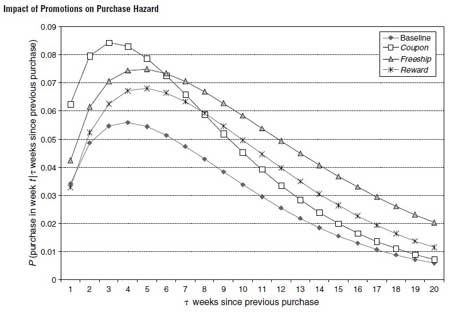Jim answers questions from fellow Drillers
(More questions with answers here, Work Overview here, Index of concepts here)
Q: One of the first things I am doing in my new job is to identify the Customer Lifecycle pattern – how many periods (month, year) will it be before a customer is likely buy again. In enterprise software industry, where software cost easily 6 figures, # of years is a reasonable time frame.
A: Yes, one would assume this. But these notions would most likely be based on a feeling of the “average” behavior, and on average, it probably does take a long time.
What is not known is this: if the “average” is composed of short-cycle and long-cycle buyers, who are the short cycle buyers, and what are they like? What industry SIC code, for example? And can we get more of them, or at least focus more resources on them, if they are the most profitable? So the challenge is not only to look for the “average”, but then understand how this average is composed. If you can break down the average by industry, or by salesperson, for example, this might be highly directional information.
Q: From my internal analysis, however, I discerned from the sales figures something quite counterintuitive – the period between first and next sale is much shorter than I would have thought for the SW industry in general.
Continue reading Segmentation by LTD & LifeCycle